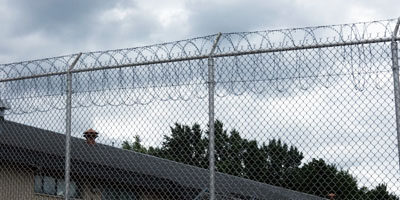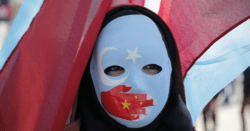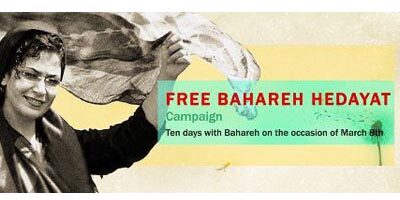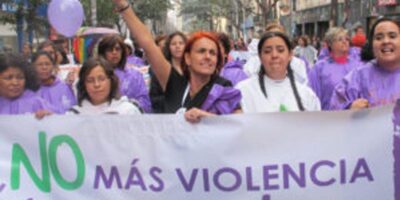Cambodia is a post-conflict country struggling to get back on its feet since 1993. Badly afflicted by endemic corruption, a judicial system dominated by money and politics, and the absence of rule of law, the issue of forced evictions, or landgrabbing as it is commonly called, affects tens of thousands of Cambodians every year.
For some, June 6th 2006 (6-6-6) was believed to announce the apocalypse. And although humanity did not indeed come to an end that morning, the world did collapse for more than a thousand families of the Sambok Chap community, in Phnom Penh. Their houses were destroyed, and the villagers crowded into trucks and relocated to Andung, almost 30 kilometres outsides the capital.
This was the start of the largest displacement of people since the Khmer Rouge, in the north-western end of the city around Boeung Kak lake.
Sambok Chap residents previously enjoyed a life in the city, running small businesses and shops close to adequate resources and local markets. Now, more than three years since the eviction, most of them live in deplorable conditions, without access to clean water and sanitation.
Dr. Rapho, formerly a medical officer in refugee camps following the Khmer Rouge period, is part of a medical team of the Cambodian League for the Promotion and Defense of Human Rights (LICADHO) that visits Andung twice a week. Asked if Andung could be compared to a refugee camp, he said that, lacking UN and other international support, it was worse.
“There is no water, no rice, no medical support, no school, nothing. Conditions are impossible for human life.”
Dey Krahorm
In January 2009, another community nearby in Phnom Penh, Dey Krahorm, lost a four-year struggle despite gaining worldwide media attention. Hundreds of armed military police and company workers came one morning and demolished it.
Lee Robinson, the director of LICADHO Canada, was there. “I really couldn’t believe that anything really bad could happen with so many witnesses and so many cameras, right in the middle of the capital city. There was still a part of me that thought someone would stop it before ‘it’ happened. Hope in humanity said some miracle was coming our way. It wasn’t true. The only miracle is that no one was killed.”
Despite national and international criticism, landgrabs continue to increase in frequency and incidents of violence. More than 16,462 families were affected by landgrabbing across Cambodia in 2008, according to LICADHO’s Myth of Development report. Amnesty International estimated that 150,000 more Cambodians were living under the threat of forced eviction, calling this “fast becoming one of the most widespread and systematic human rights violations affecting Cambodians.”
A Heritage of the Khmer Rouge
Land conflicts take roots in the country’s recent past, and appear as one of the multiple sequels of the brief yet murderous Khmer Rouge regime (1975-1979). During that period, over 2 million Cambodians died or were killed. The regime carried out a radical collectivisation of land countrywide, suppressing the whole notion of private property. Phnom Penh was emptied of its people, who were sent into the rice fields to bring their workforce to agriculture, perceived to be the motor of the regime.
The Khmer Rouge era resulted in confusion about land property, and now there is a slow land redistribution process to provide Cambodians with land rights. But the road is full of obstacles.
The 2001 Cambodian Land Law provides that a person who has been living on a land in good faith for more than 5 years is vested with “possession rights.” These include the right to apply for land title, and until such time implies the “possessor” has same rights as an “owner”. The implementation of the law remains weak, however, and most Cambodians do not yet hold any land title and therefore remain vulnerable to forced evictions.
A 2004 World Bank report estimated that 20-30% of landowners held 70% of the country’s land. In the countryside, 45% of families were landless or near landless. The last five years haven’t seen much improvement; indeed, many consider the situation to be worsening at a rapid rate.
Cambodia has experienced impressive economic growth (8.6% in 2006), mainly benefiting a fortunate minority. The resulting sharp rise of land values in urban centres is concurrent with the increase in landgrabbing. This appears to be stimulated by the growth of the tourism sector, the rising demand for land, and a new devotion to “city beautification.”
In Phnom Penh, the authorities consider massive evictions as a necessary evil. Government representatives systematically refer to villagers as “squatters” describe the zones where they live as “anarchic.” This rhetoric, repeated in the local pro-government media, serves to justify the dismantling of these communities and their relocation, often to the far outskirts of the capital where there are few job opportunities.
Fear, corruption and injustice
Community representatives and villagers often face groundless criminal charges. Accusation of infringement of private property is a new trend in this land crisis, increasingly used to intimidate and divide communities. There is a lack of lawyers, and few of these are willing to defend land cases. Most cases of landgrabbing involve people close to political power, and threats to human rights defenders appear to have increased.
Because of dynamics of political power, endemic corruption and an inefficient judiciary system, the courts are ineffective regarding legitimate claims. Threatened communities are forced to concentrate their efforts on seeking sufficient compensation rather than enforcement of their legitimate right to their land. The constant intimidation and threats, along with the transformation of some communities into real war zones, discourage many from advancing their claims.
Seeking government intervention, communities from throughout Cambodia have protested at the Prime Minister’s residence and written letters to all levels of government and to various ministries. Meanwhile, the inhabitants of the former Sambok Chap and other evicted and displaced communities across Cambodia are trying to rebuild their lost lives in inhumane conditions. Many, including former residents of Dey Krahorm, have lost hope.
During his December 2007 mission to Cambodia, former UN Special Representative Yash Ghai visited threatened communities in Phnom Penh and was very critical of the government’s policies.

Children of the Dey Krahrom community, nervous about the hired men with demolition bars. Photos by Geneviève King Ruel
“The type of development that is lauded here, not only by the government but by international agencies, is the type of development that impoverishes people, that deprives them of their resources, that adds further to the marginalization, increasing enormously the number of people who then can barely make a living. And on the other side, you have these huge accumulations of wealth, which are collected not through honest work but through various forms of interactions between the state and private interests.”
One Boeung Kak resident asked a LICADHO Canada monitor about the role of foreign governments in that approach to development. “If your governments are giving development money to my government, doesn’t that mean your government is responsible for what happens to us?”
As Chan Vichet, a Dey Krahorm resident recently in Geneva to testify at UN hearings, told a LICADHO Canada representative, “In Cambodia, when a poor man like me hears about development, [he] becomes worried and afraid. It’s like having a dream about ghosts.”
Development aid to Cambodia provides a substantial part of the country’s budget, climbing to almost $1 billion dollars a year. Canada provides about $16 million a year in aid, including support of land reform and property rights.








